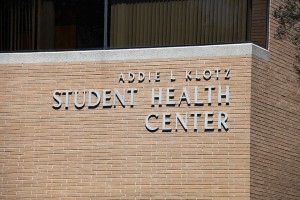Monkeypox: What You Need to Know (So Far)

Photo by Lee Choo.
Late last week, the California Department of Public Health reported it had distributed more than 51,000 doses of the monkeypox vaccine to local public health departments. This followed public health emergency declarations by Gov. Gavin Newsom and the Biden Administration. In his announcement, Newsom added that the spread of monkeypox must be slowed through “vaccines, treatment and outreach.”
In a statement following the national public health emergency declaration, California Department of Public Health (CDPH) Director and State Public Health Officer Dr. Tomás J. Aragón added: “The state remains focused on slowing the spread of the virus in impacted communities, administering the limited number of vaccine doses we have, and raising awareness about prevention measures and access to treatment. Thanks to the state’s current public health infrastructure and readiness because of the COVID-19 pandemic, California is well-positioned to continue addressing this outbreak.”
According to the Centers for Disease Control and Prevention (CDC), monkeypox is a rare disease that derives from the monkeypox virus. It is related to the variola virus, which produces smallpox, but it is not related to chickenpox. It was discovered in monkeys in 1958, and in humans in 1970. State and federal health officials say the risk of getting infected is extremely low.
Medical and public health experts on campus provided more information to CSUN Today about the disease and how students, staff and other members of the campus community can prevent infection.
Lawrence Chu, professor of epidemiology and biostatistics in the College of Health and Human Development, said that safety measures in place due to COVID-19 will provide protection.
“The COVID mitigation efforts on campus (masks and social distancing) will certainly help to prevent monkeypox transmission,” Chu said. In addition, he advised everyone to “wash your hands regularly, don’t share drinks [or] food with others, and don’t touch others.”
Dr. James Merrin, interim chief medical officer of CSUN’s Klotz Student Health Center, gave information on the basics of the disease.
How is monkeypox spread?
Monkeypox is mostly spread by prolonged skin-to-skin contact. It is also spread by touching the skin lesions. There is also suspicion that it can spread by close face-to-face contact, as in prolonged kissing, doing mouth-to-mouth resuscitation, and medical procedures in or through the mouth.
What are the symptoms?
Monkeypox can present as a mild or moderately severe viral infection like Influenza. What makes it different are the skin lesions.
How does one avoid infection?
Mutual monogamy (or a monogamous relationship) and physical distancing are the recommended ways to minimize one’s risk.
(The CDC also offers extensive information about prevention and minimizing the risk of monkeypox, at: https://www.cdc.gov/poxvirus/monkeypox/index.html.)
What are the treatments?

 experience
experience